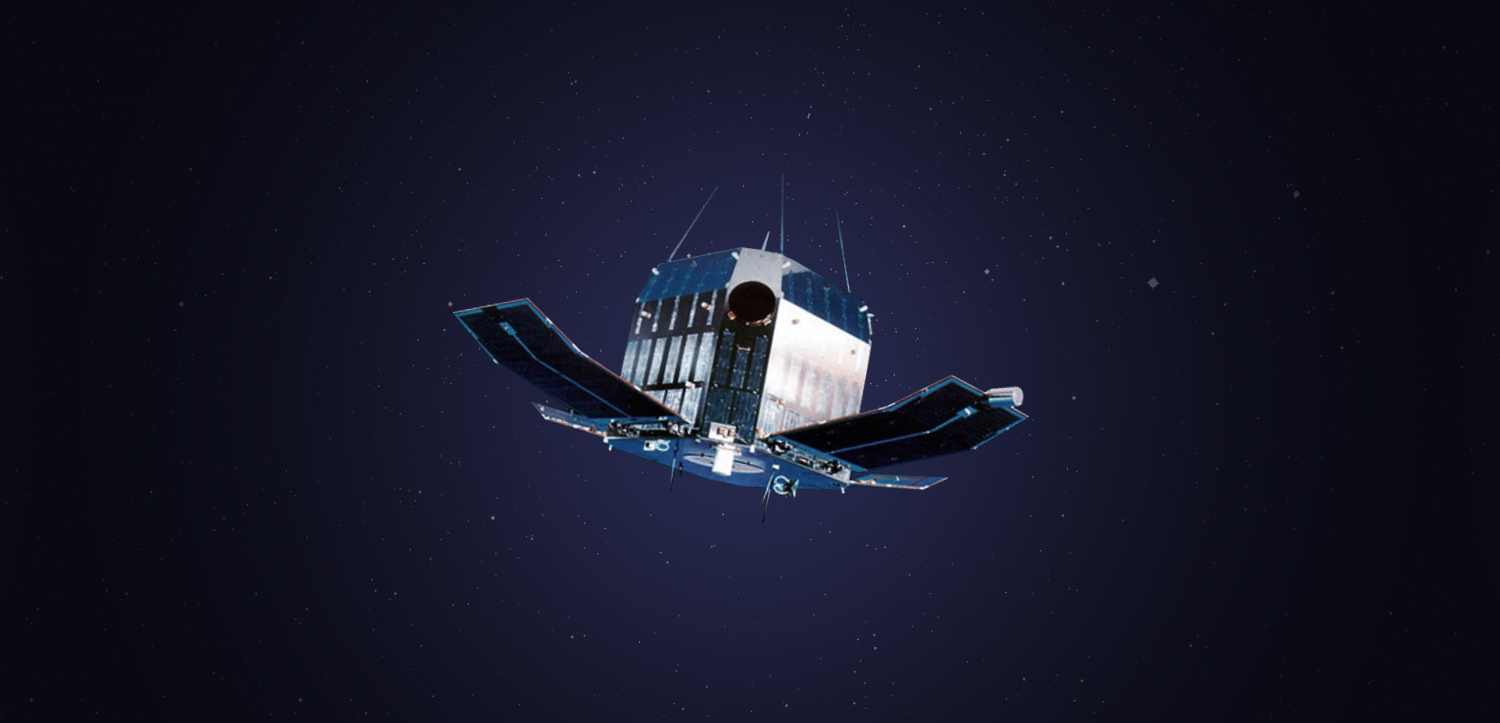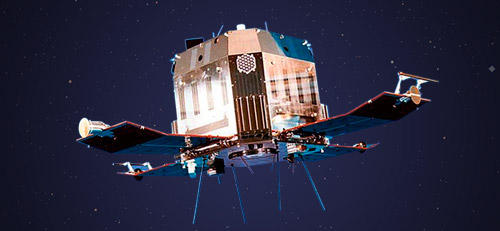TENMA measured energy spectra of various X-ray stars accurately using the high-energy resolution of gas-scintillation proportional counters. The figure shows an example of the energy spectra obtained from the X-ray pulsar Vela X-1. An emission line from cold iron is clearly detected at 6.4 keV.
| Name (pre-launch in parentheses) | TENMA (ASTRO-B) |
|---|---|
| International Designation code | 1983-011A |
| Objectives | High-resolution spectroscopy of X-ray stars and observations of gamma-ray bursts |
| Launch Date | February 20, 1983 |
| Launch Location | Kagoshima Space Center (Uchinoura) |
| Launch Vehicle | M-3S-3 |
| Weight | 216kg |
| Shape | Square pillar, 94cm diameter, 89.5cm high Four solar paddles |
| Orbital Altitude | Perigee 497km, Apogee 503km |
| Orbital Inclination | 32° |
| Type of orbit | Near circular |
| Orbital Period | 94 min. |
| Scientific Instruments | Gas Scintillation Proportional Counter X-ray Focusing Collector Hadamard X-ray Telescope |
| End of Operation | December 17, 1988 |
| Reentered Date | January 19, 1989 |
| Operation | After launch, the solar paddles were deployed, and initial checks, attitude control with magnetic torquers and spin control were conducted smoothly. Later, attitude control was changed to free-spin mode because trouble with the momentum wheel increased satellite rotation. A problem was found in the power system in July 1984, but observations of X-ray stars continued because the mission instruments remained normal. |
| Results | 1.Discovered hot plasma of several tens of millions of degrees located along the Galactic plane. 2.Discovered the iron absorption line in the energy spectra of X-ray bursts, which was red-shifted in the strong gravitational field of the neutron star. 3.Identified X-ray emission regions in low-mass X-ray binaries as the surface of the neutron star and the accretion disk. 4.Discovered that the cold, i.e., neutral iron is responsible for the emission line from X-ray pulsars. |



